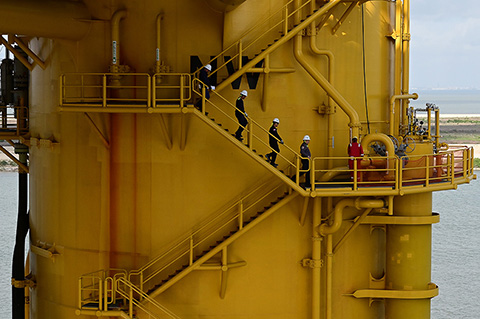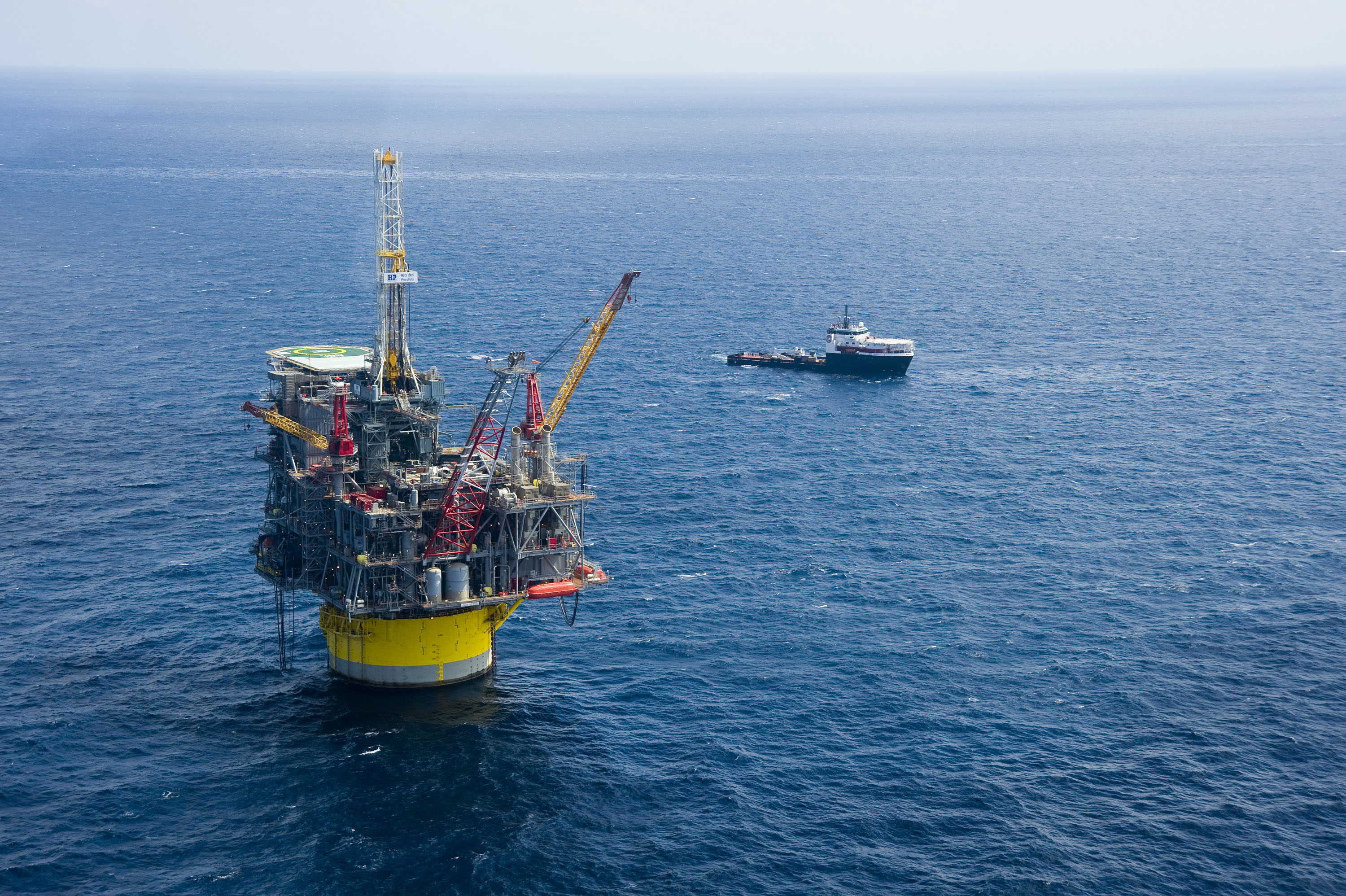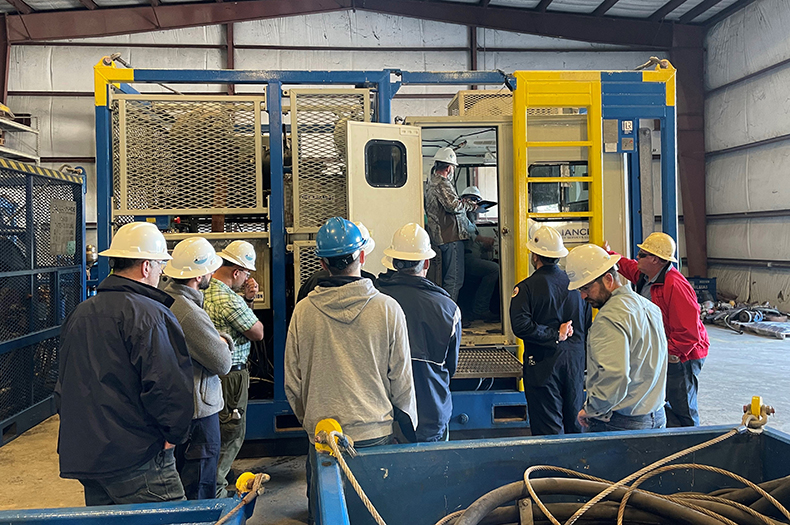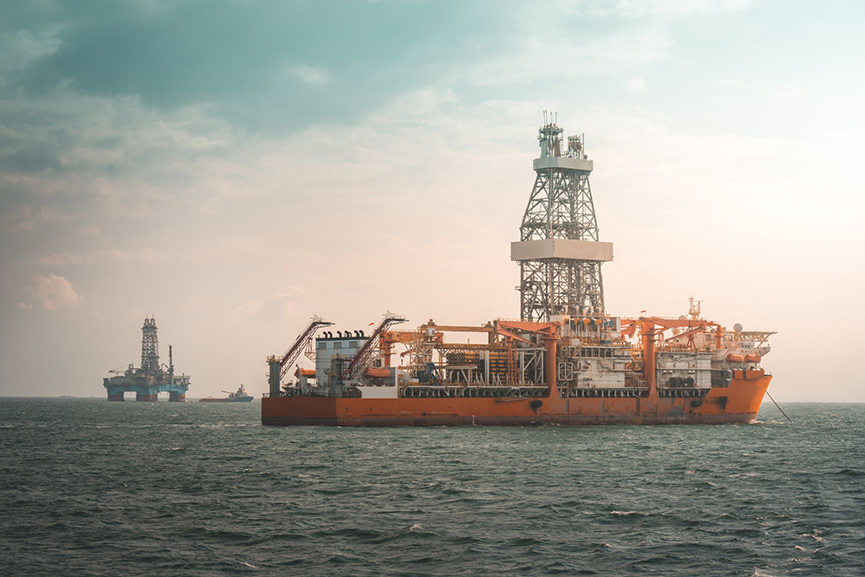The Bureau of Safety and Environmental Enforcement has three regional offices: one in New Orleans, one in Anchorage, one in Camarillo, California. Additionally, renewable energy operations are underway along the Atlantic coast, which is managed by BSEE’s Renewable Energy Operations team in Sterling, Va.
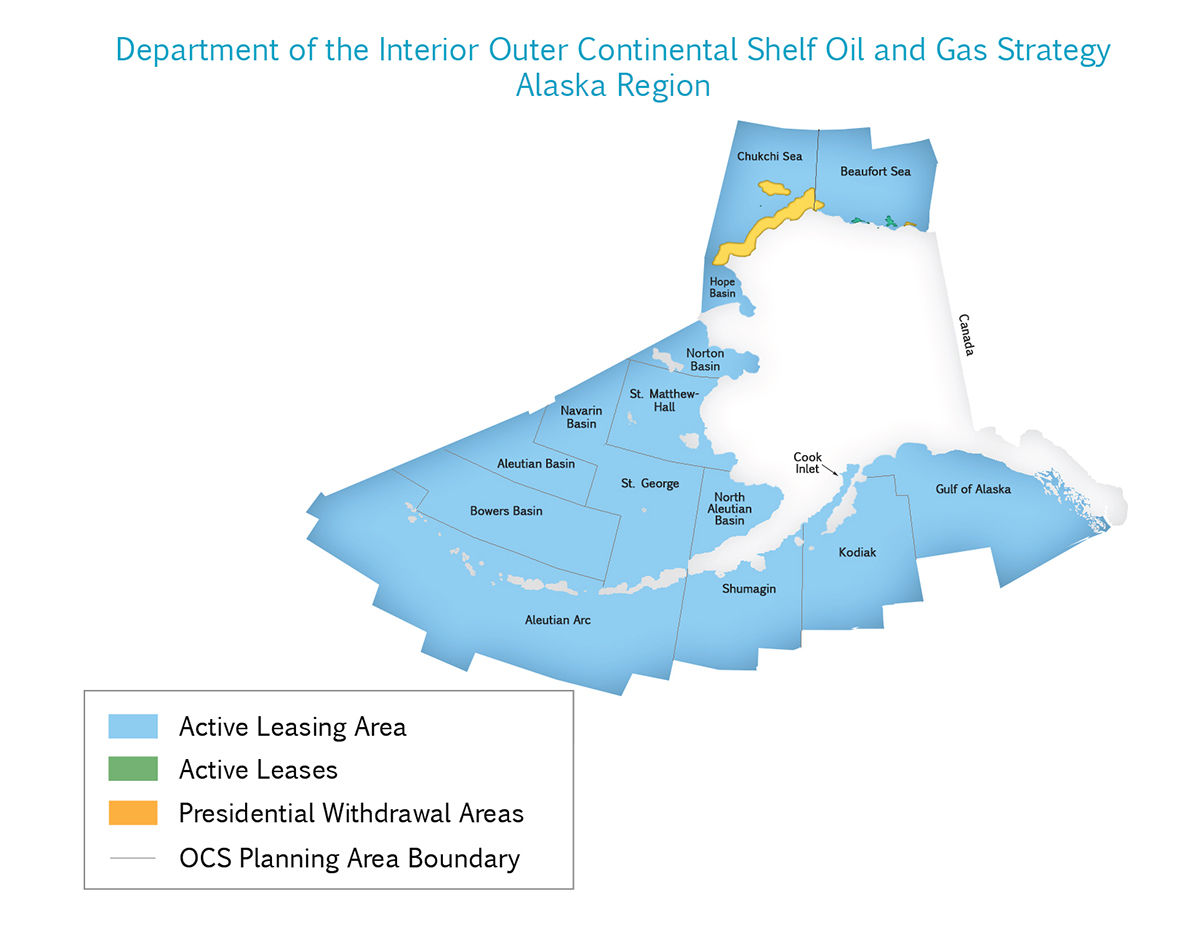
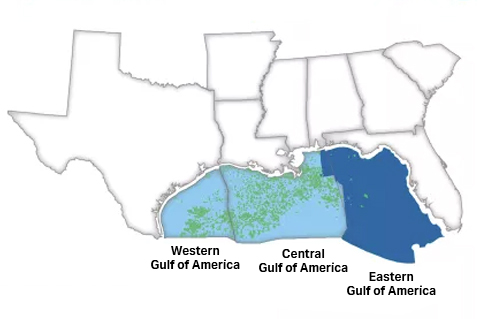
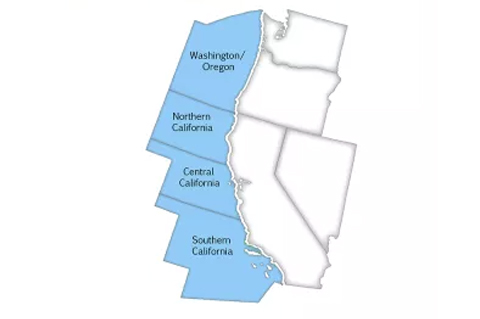
-
The Alaska Region oversees more than one billion acres on the Outer Continental Shelf and more than 6,000 miles of coastline -- more coastline than in the rest of the United States combined. The region encompasses the Beaufort and Chukchi Seas, the Bering Sea, Cook Inlet and the Gulf of Alaska.
Like all BSEE regions, the Alaska Region works to promote safety, protect the environment and conserve resources offshore through vigorous regulatory oversight and enforcement.
Regional offices are responsible for reviewing Applications for Permit to Drill (APD)s to ensure all safety requirements are met, and for conducting inspections of drilling rigs and production platforms using multi-person, multi-disciplinary inspection teams.
Alaska Region inspectors utilize a number of enforcement tools such as the issuance of Incidents of Non-Compliance (INC)s citations to require operators to correct violations. Regional and field operations personnel also investigate incidents that result in injuries and/or pollution.
Contact
Main Phone Number: (907) 334-5300
Media Inquiries: bseepublicaffairs@bsee.gov
Public Affairs: Kevin Gonzalez
(202) 679-6675Exploration
Due to the under-explored nature of Alaska’s expansive Federal Outer Continental Shelf (OCS) Lands the region is considered a frontier area. Despite this frontier designation and several recent OCS Lands Act Section 12(a) Presidential Withdrawals removing OCS Planning Areas from consideration for leasing, Alaska’s OCS lands remaining available for leasing are estimated to contain considerable undiscovered technically recoverable oil and gas resource volumes.
The primary area of interest for future exploration activity in the Alaska Region is the upper portion of Lower Cook Inlet. Following successful Federal OCS lease sales in 2017 and 2022, BSEE is positioned to oversee potential exploration drilling activities on 15 OCS leases in this area. In preparation for submission of future Exploration Plans covering exploration activities across some or all of these 15 leases, the lessee in recent years has successfully collected new 3D seismic, gravity and magnetics, and shallow hazards survey data to identify and define ideal drilling targets, assess geologic hazards and archaeological/cultural resources to avoid or mitigate, and inform further exploration strategies.
Prior to the recent Presidential Withdrawals, other recent exploration activity on Alaska’s OCS lands occurred primarily in the Beaufort and Chukchi Seas which together represent the entirety of the U.S. Arctic Ocean coastline. These Arctic exploration campaigns ultimately failed to discover the resource volumes necessary for industry to justify continued exploration and development activities.
Development and Production
Although there have been several mid-to-large oil and/or gas discoveries on Alaska’s OCS lands over the years, the high cost of development in the region and distance to transport product to market economically has precluded industry from proceeding with developing and producing those historical discoveries. There are presently no oil and gas production facilities sited on Alaska’s Federal OCS lands, but some Federal OCS leases seaward of the Federal/State 3-mile jurisdictional boundary are currently producing oil from facilities sited in the State of Alaska’s nearshore waters.
In coordination with the State of Alaska, BSEE Alaska OCS Region co-manages development and production activities at Northstar Island (Northstar) under the terms and conditions of the joint State/Federal Northstar Unit Agreement. Northstar is a five-acre, artificial gravel and concrete island located in the nearshore State of Alaska waters of the Beaufort Sea, twelve miles northwest of Prudhoe Bay and six miles from Alaska’s mainland coastline. Northstar’s facilities and leases are currently owned and operated by Hilcorp Alaska, LLC.
Northstar Island’s first oil production began in October 2001. After the produced oil and gas are processed and measured on site, treated natural gas is re-injected to maintain reservoir pressure and enhance further oil recovery and is also used on-site for power generation. The combined blend of State and Federal sales-quality oil is transported onshore by a pipeline that is buried 7 to 11 feet below the seafloor to avoid ice scouring impacts and is then routed into the Trans-Alaska Pipeline System (TAPS) for transportation to the tanker shipping hub in Valdez, AK. To oversee compliance with federal regulations, federally certified inspectors based in the BSEE Alaska OCS Regional Office in Anchorage, AK regularly witness Northstar operations through both scheduled and unannounced inspections to ensure the safe and responsible development of our nation’s domestic offshore energy resources.
-
The Gulf of America OCS Region is a major focus of the oil and gas industry. BSEE's Gulf of America Region, which is located in DOI Regions 4 and 6, oversees nearly 2,000 facilities and about 13,135 miles of active pipeline in the Gulf of America.
Through the many functions and program areas within the Regional office, offshore oil and gas activities from the very beginning of exploration through infrastructure decommissioning are managed with a focus on promoting safety, protecting the environment, and conserving energy resources. The Gulf of America Region is responsible for reviewing applications for activity permits (well permits, production safety permits, commingling requests, decommissioning plans) to ensure all regulations are met, for conducting inspections of drilling rigs and production platforms using multi-person, multi-disciplinary inspection teams, pre-production inspections of platforms prior to installation, helping to develop and enforce standards and regulations, and enforcing environmental compliance. A newly developed section within the Region oversees decommissioning activities and helps to ensure appropriate decommissioning costs are assessed to every offshore asset. Regional and field operations personnel also investigate incidents that result in injuries and/or pollution.
The Gulf of America Region uses a number of enforcement tools such as the issuance of Incidents of Non-Compliance (INC) citations to require operators to correct violations, issuing civil penalties, and conducting Annual Performance Reviews (APR) of operators.
Within the Region, the Office of Safety Management reviews and audits each operator’s safety program using Safety and Environmental Management Systems (SEMS), incident data, INC data, and safety reports. There is also a continued effort to assess new technology within deepwater operations. This effort is also supported by BSEE’s Emerging Technology Assessment Center in Houston, TX.
Contact
1201 Elmwood Park Blvd
New Orleans LA 70123Main Phone Number: (504) 736-0557
Public Inquiries: 1 (800) 200-4853
Media Inquiries: bseepublicaffairs@bsee.govPublic Affairs: Mike O'Berry
Office: (504) 731-7847
Mobile: (504) 432-5508Exploration
The deepwater portion of Gulf of America has shown a continued increase in oil and gas exploration and development. The majority of exploration activity is currently taking place in water depths greater than 500 feet. BSEE engineers within each of the Region’s District Offices review and approve well operations permits. The majority of the exploration oversight is managed by one of the Region’s five District Offices. Engineers review and approve well operations permits while BSEE inspection teams travel offshore each day to inspect drilling rigs and production facilities, and observe equipment testing.
Production
Operations in the Gulf of America are setting and surpassing records in water depth and length using new and improved proven technology. The development of new technologies is helping to overcome operational obstacles and manage risk more effectively.
After development plans are approved, operators submit specific applications to BSEE for pipelines and production facilities, and to conduct activities described in the plan.
Useful Links
-
The Pacific Region office, located in Camarillo, Calif, is responsible for managing the production of conventional and renewable energy resources on the federal Outer Continental Shelf (OCS), which extends seaward of California, Oregon, Washington, Hawaii and the Pacific U.S. Trust Territories. The Pacific Region works to promote safety, protect the environment and conserve resources offshore through vigorous regulatory oversight and enforcement.
Pacific Region personnel monitor existing facilities and operations, all of which are currently off the California coast, and many of which are aging facilities that were built decades ago.
Inspectors use a number of enforcement tools, such as the issuance of Incidents of Non-Compliance (INC). Issuance of INCs results in operators being required to return to compliance and may also result in additional ramifications. If injuries or oil spills do occur, regional and field personnel may be called upon to formally investigate the incidents.
Contact
760 Paseo Camarillo, Suite 102
Camarillo, CA 93010Main Phone Number: (805) 384-6300
Public Information: 1(800) 672-2627
Media Inquiries: bseepublicaffairs@bsee.govPublic Affairs: Kevin Gonzalez
Office: (805) 384-6346
Mobile: (202) 679-6675Applications for Permit to Modify
Federal OCS DecommissioningDevelopment & Production
Pacific Region personnel currently oversee operational and production activity from 23 oil and gas platforms located offshore southern California. These facilities currently account for about 5.9 million barrels of oil and 4 billion cubic feet of gas annually.
In conjunction with the Department of the Interior’s efforts to develop cleaner energy sources, the Pacific Region is also involved in renewable energy projects off the coasts of Oregon and Hawaii. Because wind production on the OCS has the potential to significantly expand, Pacific Region employees are involved in developing regulations, inspection guidelines, and other procedures that will allow safe and environmentally appropriate development.


